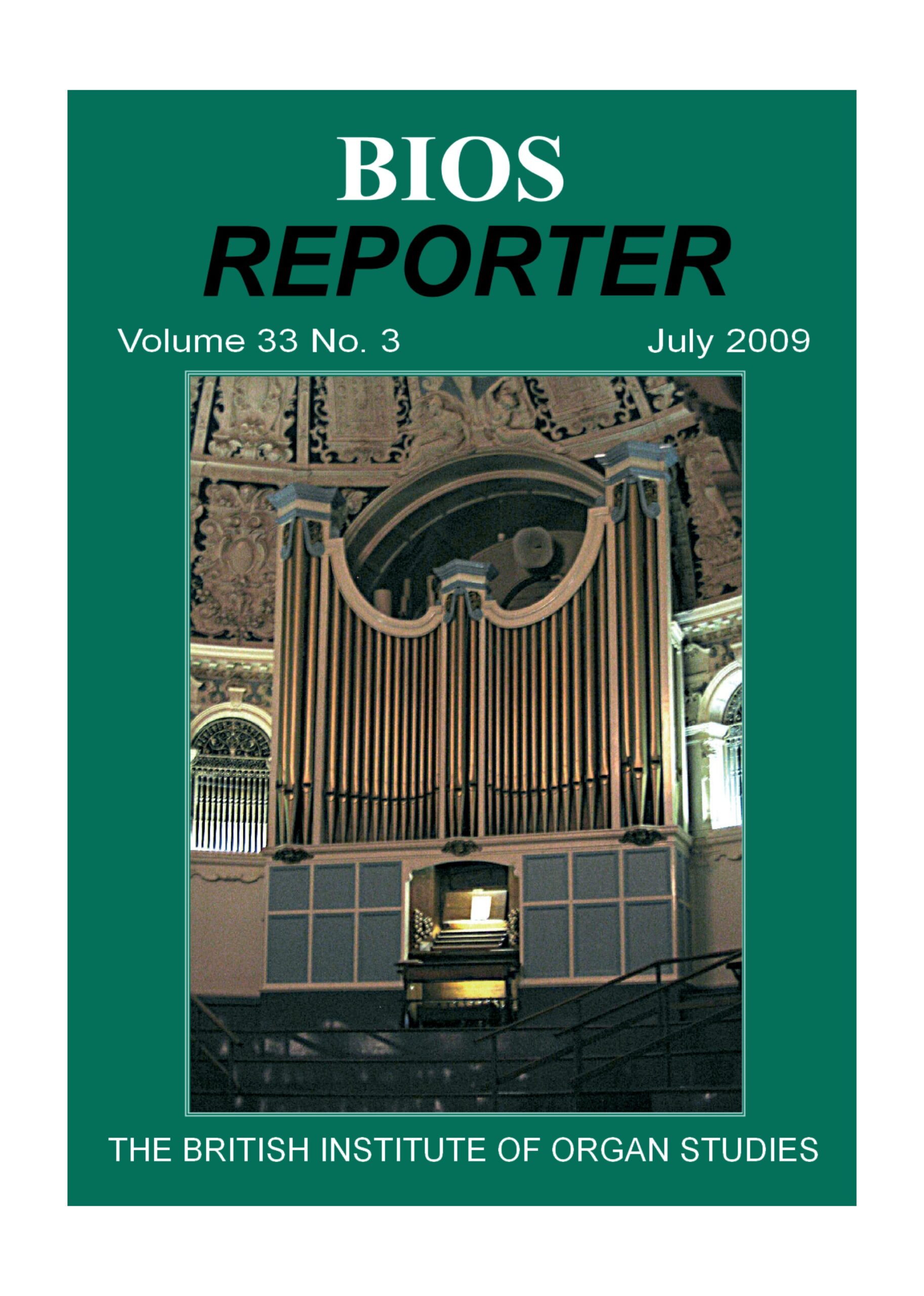Your basket is currently empty!
BIOS Reporter – Volume 33, No.3 – July 2009
One of Handel’s organ concertos (Op. 4 No. 4) is part of the Handel Coronation Anthems programme of the Choral Pilgrimage of The Sixteen. Just like Sir John Eliot Gardiner’s epic Bach pilgrimage of 2000, Harry Christophers’ group decided to take a small organ with them rather than using whatever instrument happened to be at the various venues. It was therefore very interesting, a few weeks ago, to see a ‘box organ’ used for the Handel concerto and to hear it very effectively fill the rather large space of St James the Greater in Leicester. What was even more interesting was to find upon closer inspection that this organ (Henk Klop, 2007; 8′, 4′, 2⅔’, 2′) contained nothing but wooden pipes. Putting aside the slight disappointment on finding that The Sixteen had chosen a Dutch organ rather than one from several British builders who could have built a comparable instrument, I was prompted to wonder whether we have largely lost, or diminished, our ability to appreciate the sound of small organs. Why have organs become so large? Cathedrals and large parish churches have for the most part retained their original dimensions but even the most cursory look at NPOR entries will show that organs have increased in size phenomenally over the past two hundred years or so. Just to give one example, the Cathedral Church of St Nicholas in Newcastle-upon-Tyne has a splendid Harris case of 1676 that originally contained a seventeen-stop, two-manual organ that kept Charles Avison and large eighteenth-century congregations happy for decades. In its current manifestation, the Harris case ‘fronts’ a monumental 93-stop, four-manual instrument. Lest there be any misunderstanding, the current Newcastle Cathedral organ is a superb instrument, but my question is, why do many cathedrals and churches need such large organs? I am not sure that I have any answers but it is not a question that I recollect having seen posed on the pages of organ journals.
